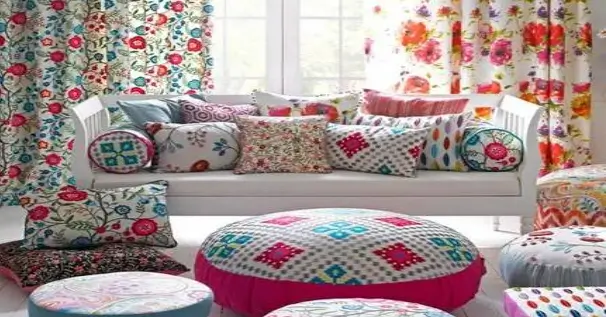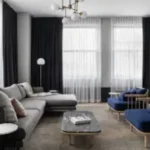Selecting the perfect fabric for your sofa upholstery can transform your living space, making it both stylish and functional. With so many options available, the decision can feel overwhelming. However, by considering factors like durability, comfort, maintenance, and aesthetics, you can find a fabric that suits your lifestyle and enhances your home. Here are some practical tips to guide you in choosing the right sofa upholstery fabric.
Understand Your Lifestyle Needs
Before diving into fabric options, think about how you use your sofa. Do you have a busy household with kids and pets, or is your home a quieter space for adults? Your lifestyle plays a big role in determining the best fabric. For example, if your sofa is a central spot for family activities, you’ll want a durable, stain-resistant material. If it’s mostly for formal occasions, you might prioritize elegance over toughness. Consider how often the sofa will be used and who will be using it to narrow down your choices.
Prioritize Durability
Durability is key when choosing upholstery fabric, especially for Custom sofa Dubai that see heavy use. Fabrics are often rated by their “double rub” count, which measures how well they withstand wear and tear. A double rub count of 15,000 or higher is suitable for everyday use, while fabrics with 30,000 or more are ideal for high-traffic homes. Materials like microfiber, leather, and tightly woven fabrics such as canvas or denim tend to hold up well over time. Check the durability rating or ask your retailer to ensure the fabric can handle your household’s demands.
Consider Comfort and Texture
The feel of the fabric is just as important as its look. Some materials, like cotton or linen, are soft and breathable, making them great for cozy lounging. Others, like leather, offer a sleek but sometimes cooler surface. Think about your climate—绒 fabrics like velvet might feel too warm in hot regions, while smooth fabrics like cotton blends work well in warmer climates. Run your hands over samples to get a sense of texture. A fabric that feels good to the touch will make your sofa more inviting.
Choose the Right Color and Pattern
Color and pattern can set the tone for your room. Neutral tones like beige, gray, or cream are versatile and timeless, blending easily with different decor styles. Bold colors or patterns, like florals or geometric designs, can make a statement but may limit future decorating options. If you love vibrant hues, consider using them in throw pillows or blankets that are easier to swap out. Also, keep in mind that lighter fabrics show stains more easily, while darker ones or patterns can hide minor spills and marks.
Evaluate Maintenance Needs
Every fabric has different care requirements, so choose one that fits your willingness to maintain it. For low-maintenance options, look for fabrics labeled as stain-resistant or easy to clean, like microfiber or treated cotton blends. Leather is also relatively easy to wipe down but may require occasional conditioning. Fabrics like silk or velvet, while luxurious, often need professional cleaning and can be tricky to maintain. If you have kids or pets, opt for machine-washable slipcovers or fabrics that can handle frequent spot-cleaning.
Test for Pet and Kid-Friendliness
If you share your home with pets or young children, durability and stain resistance become even more critical. Fabrics like microfiber and certain synthetic blends are great for resisting pet hair and scratches. Crypton and Sunbrella fabrics are popular choices because they’re highly stain-resistant and easy to clean. Avoid delicate materials like silk or loosely woven fabrics that can snag easily. Also, consider darker colors or patterns to camouflage pet hair or small messes.
Think About Allergies
For households with allergy sufferers, fabric choice can impact air quality. Natural fibers like cotton or wool are less likely to trap dust and allergens compared to some synthetics. Look for fabrics that are hypoallergenic or treated to resist dust mites. Regular vacuuming and choosing removable, washable covers can also help keep allergies at bay. If allergies are a concern, avoid fabrics like chenille, which can attract dust.
Balance Cost and Quality
Upholstery fabrics come in a wide range of prices, so set a budget before you shop. While it’s tempting to go for the cheapest option, investing in a higher-quality fabric can save money in the long run by lasting longer and requiring less maintenance. Compare the cost of the fabric with its durability and care needs. For example, leather might be pricier upfront but could outlast cheaper fabrics that wear out quickly. If you’re buying from Cushion Dubai or similar stores, ask for fabric samples to compare quality before making a final decision.
Seek Professional Advice
If you’re unsure where to start, consult with a furniture retailer or interior designer. They can recommend fabrics based on your needs and show you samples to test in your home. Bring photos of your space to help them suggest colors and textures that complement your decor. Some retailers also offer fabric swatches you can take home to see how they look in your lighting and environment.
Test in Your Space
Finally, always test fabric samples in your home before committing. Lighting can drastically affect how a fabric’s color and texture appear. Place swatches on your sofa or in the room where it will live to see how they look at different times of the day. This step ensures the fabric matches your vision and works with your existing decor.
Choosing the right sofa upholstery fabric is about balancing style, comfort, and practicality. By considering your lifestyle, testing for durability and comfort, and evaluating maintenance needs, you can find a fabric that looks great and stands the test of time. Take your time, explore options, and enjoy creating a sofa that’s perfect for your home.
Cushion Dubai Custom sofa Dubai
Last modified: September 19, 2025







